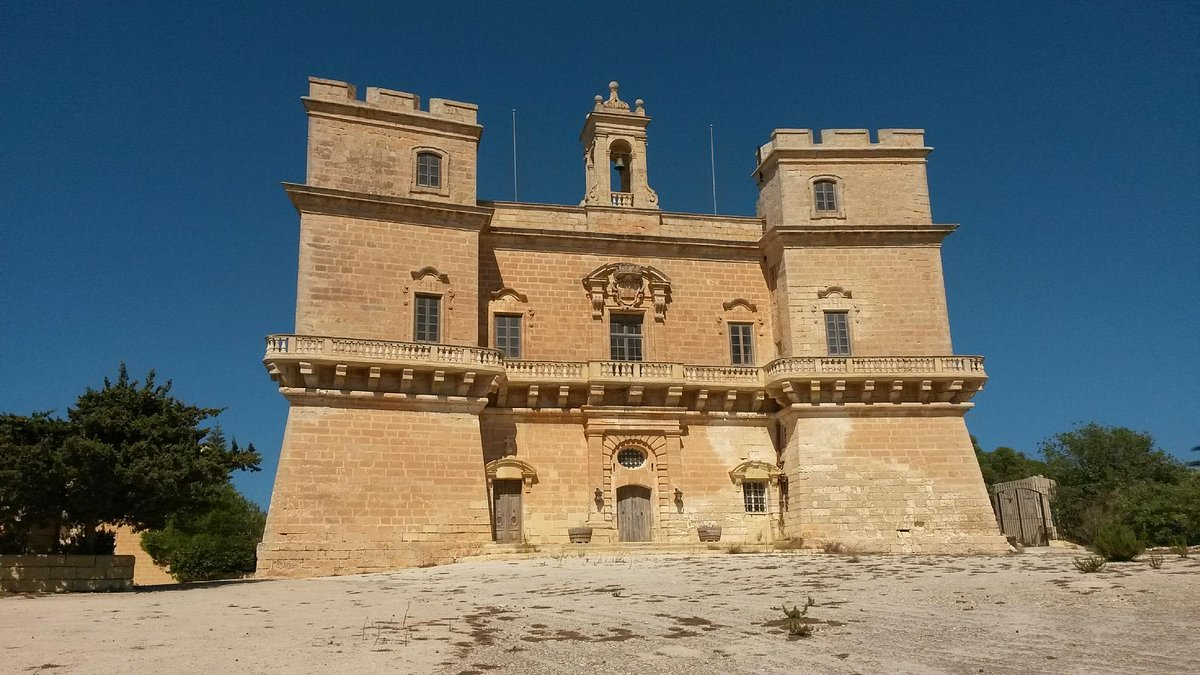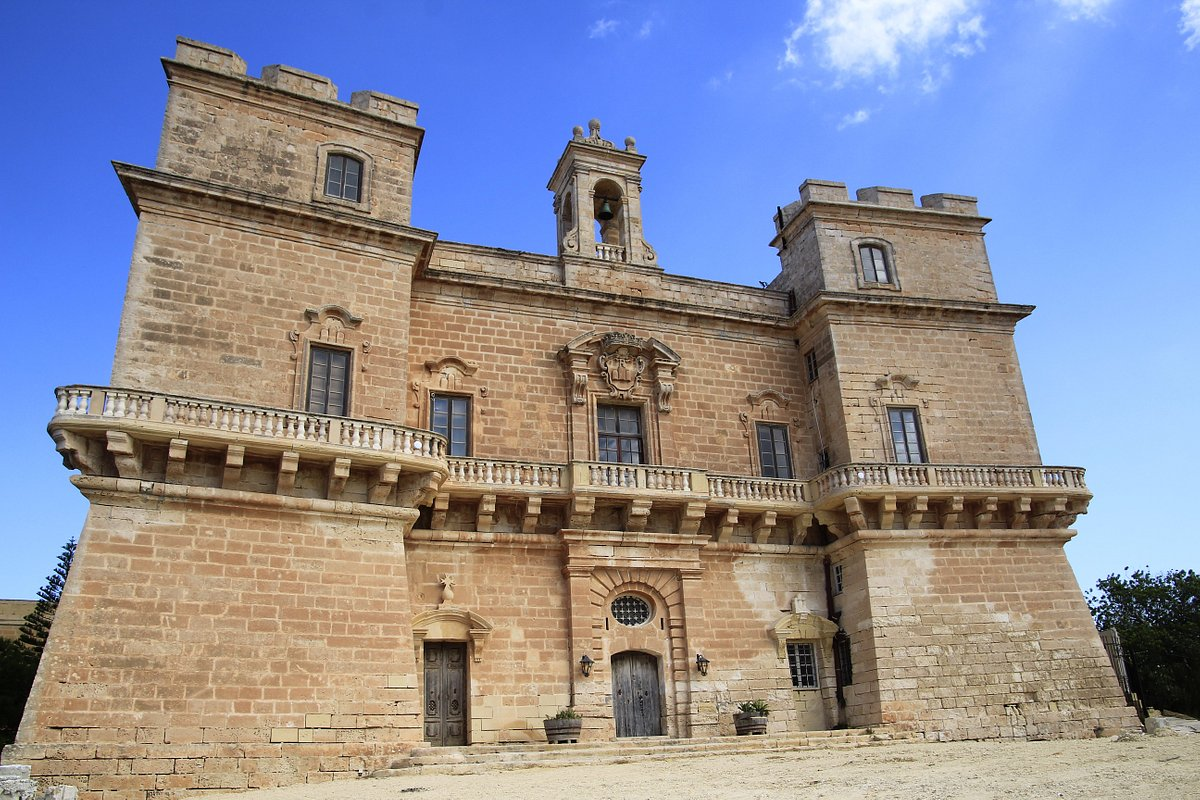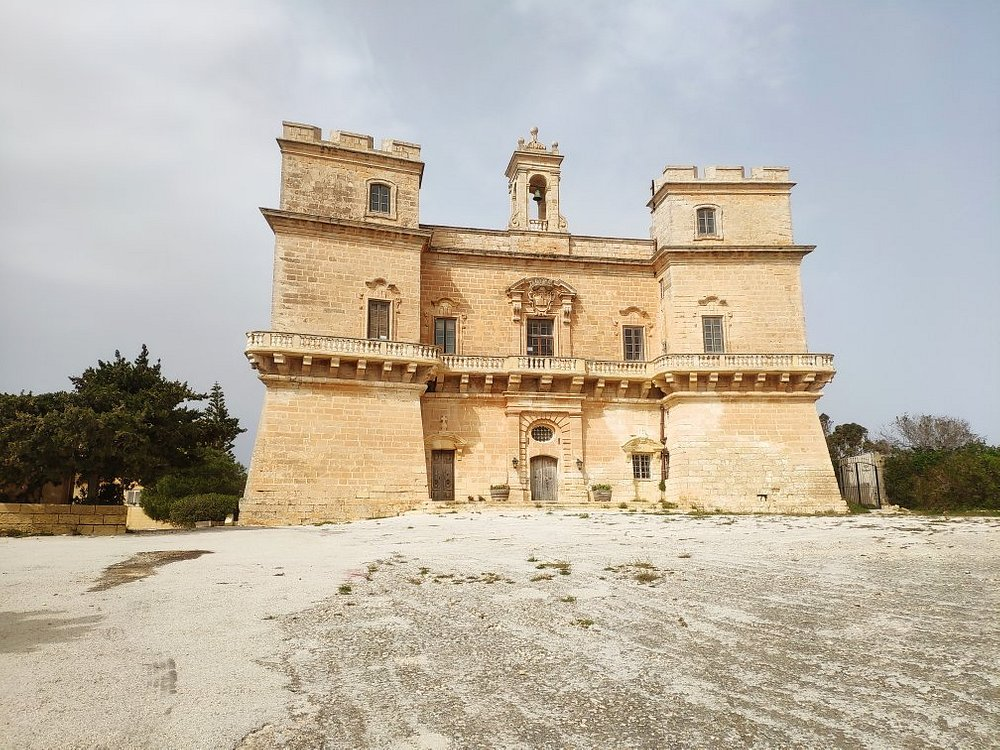Selmun Palace
Anyone entering Mellieha will see on one’s right Selmun Palace dominating the Mistra valley. Although in its appearance Selmun Palace looks like a fortified building but it wasn’t the case. Selmun Palace is similar to the Verdala Palace, but the latter was built a century before that of Selmun. The idea behind the building of fortified palaces came from Italy, especially from Firenze, but many more similar buildings were built around Europe.
This idea was later developed by French military engineers.
During the peak of the struggle between the Cross and the Crescent, Muslim forces regularly captured knights and Maltese; mostly at sea, while other times during a razzia on land, like the one in Gozo in 1551 where the whole population was carried as slaves in the Barbary Coast.


There is a debate about which Capuchin friar had put forward the idea of establishing a Monte di Redenzione degli Schiavi in Malta during Lent of 1607. In the past it was said that it was Fr Rafel Camilleri from Hal Tartani (modern Dingli). But recent research has finally arrived to a conclusion for the name of the real person responsible. From letters of that period we know that the preacher for 1607 Lent was Fr Giovanni Maria Minniti da Noto who was Minister Provincial of the Capuchins in Syracuse.
Therefore, it must have been Fr Minniti who proposed the setting up of the foundation for the redemption of Christian slaves. The Grand Master of that period, Alof de Wignacourt accepted the proposal and set up a foundation to collect funds and to use them where needed. At that time a slave was redeemable against the payment of about 70 scudi. 1
The Monte di Redenzione began to collect money but it wasn’t a sum enough to redeem many Christian slaves. It was only when a certain noble woman, Caterina Vitale, who died in 1619 left a large part of her wealth to this institution in her will. Apart from the plenty of property that she had there was the territory of the fego di Salamone or ta Salamuni, today known as Selmun. The area of Selmun was left to the Monte di Redenzione for the ransom of slaves. 2
The palace that exists today was built a century later in the early 18th century. During that period Selmun Palace was hired to knights as a place to relax and to hunt wild animals like rabbits, that existed in the surrounding lands. After Caterina’s death the surrounding lands which consisted of huge track of lands, belonged to the Monte di Redenzione. These lands access was through the Mistra Gate that still stands today which was restored a few years ago.
Selmun Palace is very large, has two floors, has four turrets and a number of embrasures on them, to look like a fortified palace. The aim was to give the impression that the area was well defended and to keep away Muslim Corsairs from that area. In the ground floor there are three doors, the middle one is larger and more elaborated than the other two. The door on the left of the palace was blocked and instead is used as a window while the door on the right side was that of the chapel that formed part of the palace.
The first floor has five doors for the outside balcony which surrounds the whole palace. On the middle door of the balcony there is the coat of arms of the Monte di Redenzione. It also has a number of windows too In the middle of the façade there is a bell that probably was more like a decoration than for a particular use. 4
The chapel which until some time ago was in the palace was dedicated to Our lady of Ransom. The titular painting was painted by Antoine Favray. Now this painting is in the small chapel that was built not far from the palace. Our Lady of Ransom was the patron of the Monte di Redenzione. 5

References:
1 The Sunday Times, September 29, 2002, pp 44-45
2 The Sunday Times, December 21, 2003, pp 68-69
3 Il-Gwida.
4 Vincent Zammit. ‘Irkejjen Storici: Il-Monte della Redenzione degli Schiavi u l-Palazz ta’ Selmun, Il-Mument
5 Il-Gwida
Researched and Written by: Charles Debono B.A.(Hons) History